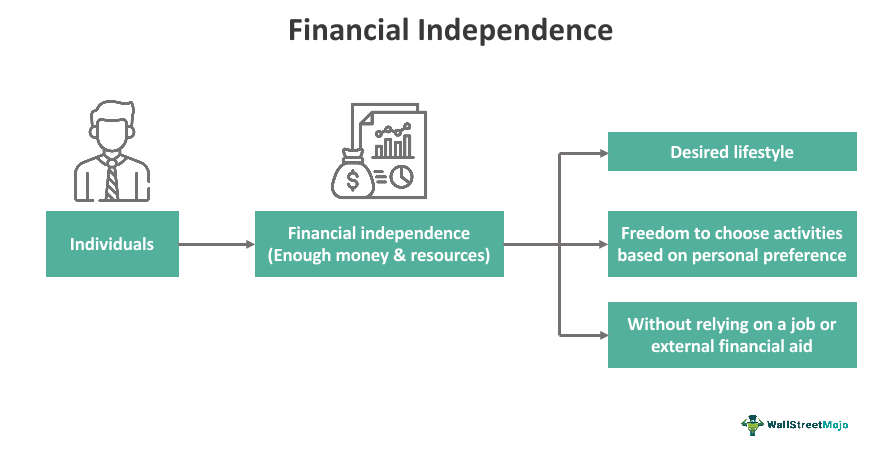Let us look at a few examples to understand the concept better.
Example #1
Let’s say Daisy, a recent college graduate working as an accountant, is planning to build financial independence. Daisy creates a budget to track her income and expenses, establishes an emergency fund to cover unexpected expenses, and pays off student loans and credit card debt. She uses a financial independence calculator for the same. She enrolls in her company’s retirement plan and contributes a portion of her salary, taking advantage of employer-matching contributions.
Daisy also explores passive income opportunities, such as investing in dividend-paying stocks and real estate properties. She is also an online tutor, which brings her additional income after office hours. Daisy continuously learns about personal finance and investing strategies, making informed decisions. She invests in low-cost index funds to benefit from long-term market growth. Daisy also pursues career growth by pursuing professional certifications and seeking promotions or higher-paying positions.
Example #2
A real-life study was conducted regarding factors that are associated with financial independence.
This study aimed to examine the factors that impact the financial independence of young adults aged 18-23 in the United States. The study proposed that economic, psychological, and family-related factors significantly determine financial independence. The data utilized for this study were obtained from the 2009 Transition into Adulthood data set and the 2009 Panel Study of Income Dynamics.
The study’s findings indicated that economic factors, such as income, assets, work status, and educational attainment, positively influenced financial independence among young adults. Additionally, psychological factors, including economic self-efficacy, money management skills, and problem-solving abilities, positively contributed to financial independence. On the other hand, family economic factors, such as parental income, stock holdings, and financial assistance, were identified as factors that decreased financial independence among young adults.
Furthermore, the study revealed that young adults who had completed college exhibited higher levels of financial independence. This was when compared to individuals who had never attended college or were currently enrolled but had not completed their studies. However, there were no significant differences in financial independence between college graduates and individuals who had dropped out of college.
This study’s findings have implications for consumer educators, suggesting the need to develop targeted financial education programs specifically tailored for young adults aged 18-23. By addressing the identified factors that influence financial independence, these programs can better equip young adults with the necessary skills and knowledge to achieve greater financial autonomy.

